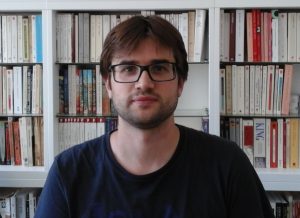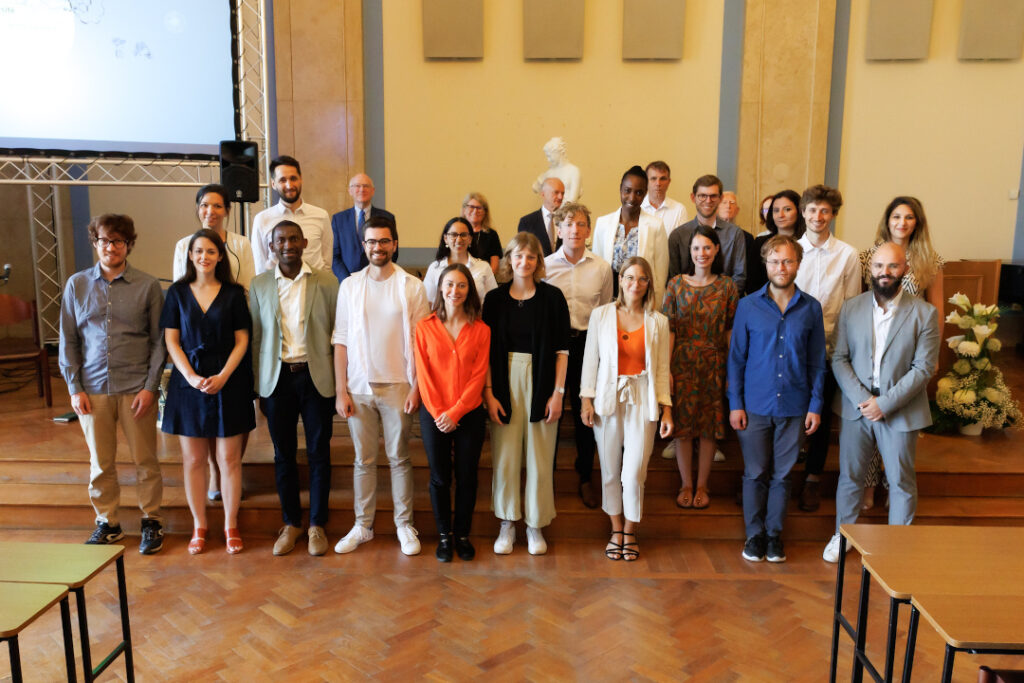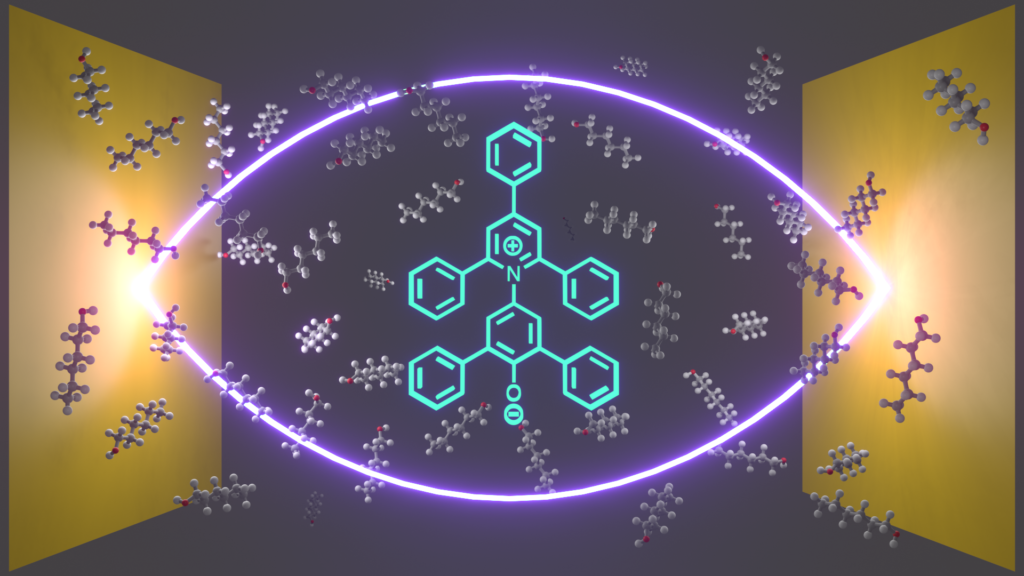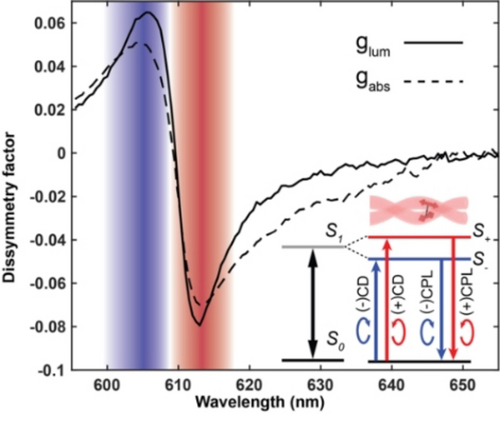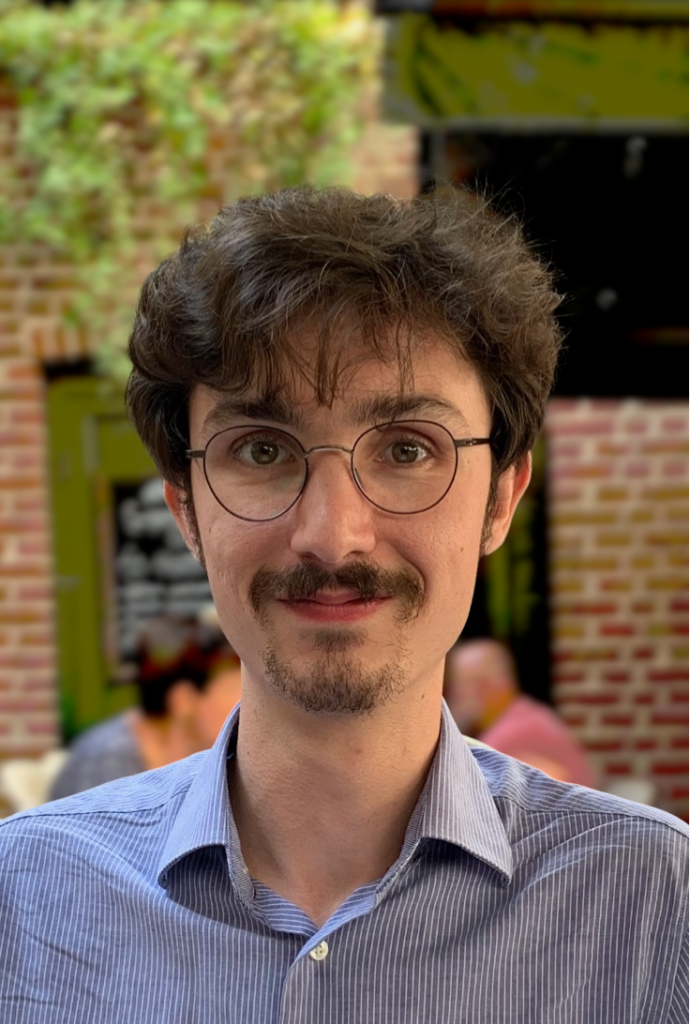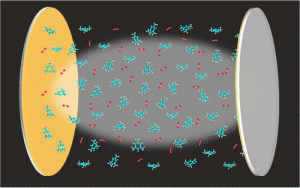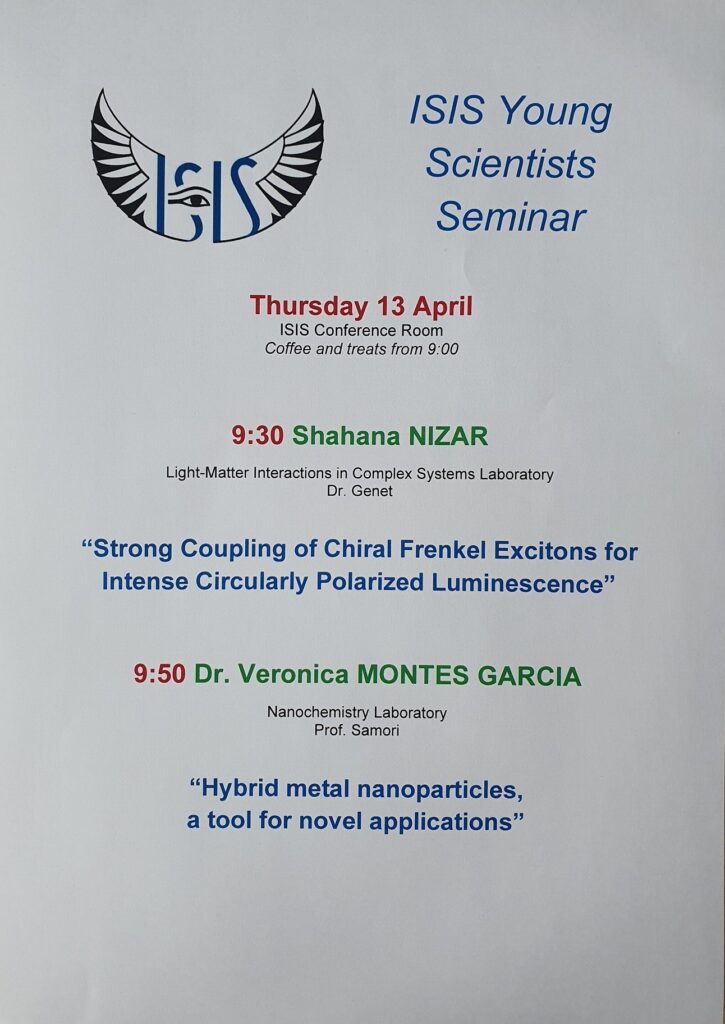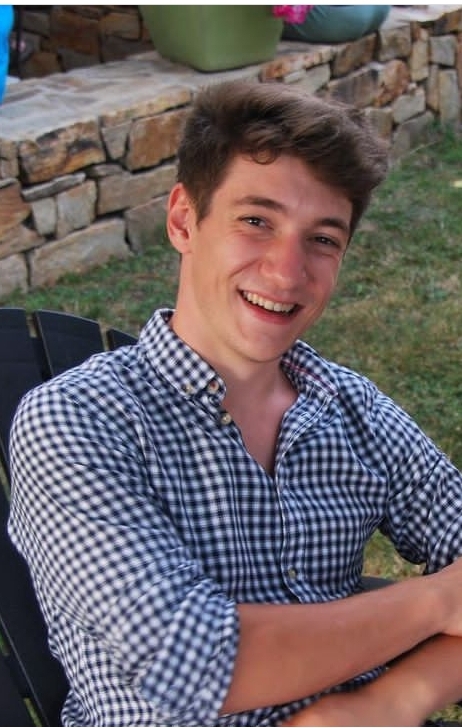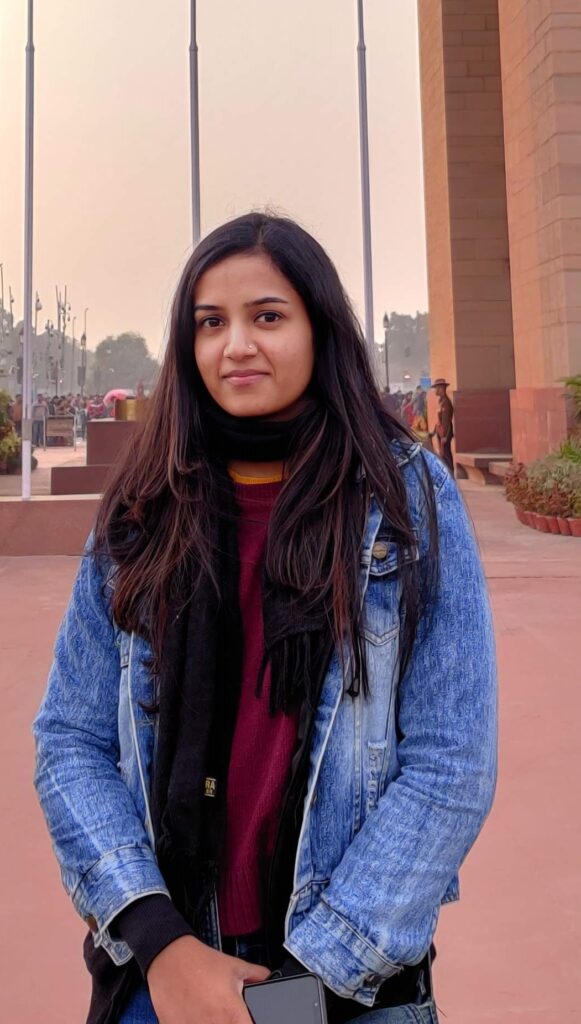We have the pleasure to welcome for one year Rémi Avriller as a visiting researcher in our team, as part of the Itinerance@INC2023 call. Rémi is a permanent researcher from the CNRS in Condensed Matter Theory team and Quantum Transport and Nano Electro Mechanical Systems group in LOMA, Bordeaux University, France. He is a condensed matter theorist, specialized in mesoscopic physics and quantum transport. He is currently investigating the stochastic dynamics of chemical reactions and the chiroptical properties of molecules strongly coupled to electromagnetic Fabry-Pérot modes and no doubt that we will share plenty of nice discussions and projects with him !
Congratulations Rémi !
Last Friday, the 26th of June, our former PhD student Rémi Goerlich, now in Tel Aviv University, received a prix de thèse from Strasbourg University, for his promising results, with 20 other doctors who graduated in 2022 in different fields (Sciences and Technology, Life and Health Sciences, Humanities and Social Sciences). More information on the University website !
Solvent Polarity under VSC
We are pleased to announce the acceptance in JACS of a new paper presenting results obtained in collaboration with Joseph Moran’s group. By coupling some vibrational bands of alcoholic solvents with cavity modes, we showed that their polarity is influenced, by measuring the solvatochromic response of Reichardt’s dye. The shift in the absorption spectrum of the dye depends on the length of the solvents alkyl chain, indicating that dispersion forces are impacted by strong coupling and may be critical to understand how vibrational strong coupling influences chemical reactivity. Congratulations to all !
Food for mind
We just updated the Publications page of the website with a few papers published since the beginning of the year. Au menu, we have chiral Frenkel excitons yielding intense circular dichroism and circular polarization luminescence as starter. The main dish is a study about the optimization of entropic costs during cooling or heating protocols applied to an optically trapped microsphere. As dessert, we finally propose a scattering formulation clarifying how spin momentum locking emerges from a geometric phase metasurface. Congratulations to all people involved in those nice results !
Welcome back to Antoine !
Antoine Tartar, who already did a Master 2 training in our lab, started a phD last week, so we will have the pleasure to have him in the team for a little more time. Following his master, he will work under the supervision of Cyraique Genet on optical trapping.
20 years of ISIS
Those two last days, ISIS was celebrating its birthday, with a bit of delay. We had a very nice scientific program, with 2 sessions on Frontiers in Chemistry and Technology and Sustainability, but also a full afternoon dedicated to privates companies (Innovation and Societal Challenges) that have been involved as antennas in the institute during those 20 years, or playing a key role in our society recently, like BioNTech. It was also the occasion to meet alumni of our team and of the institute. Some more information about the event, the history of the building, etc can be found on the Unistra website.
Happy birthday ISIS and congratulations again to Jean-Marie Lehn, its founder !
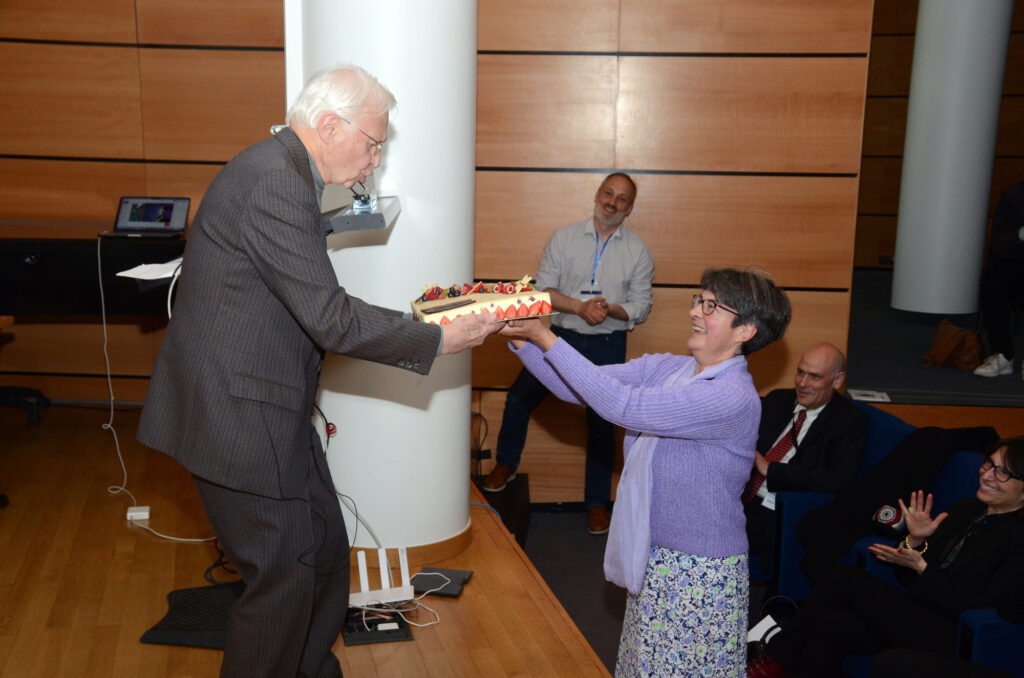 Muriel Muzet, administrative director of ISIS, offering the birthday cake to Jean-Marie Lehn (Photo : C. Schneider)
Muriel Muzet, administrative director of ISIS, offering the birthday cake to Jean-Marie Lehn (Photo : C. Schneider)
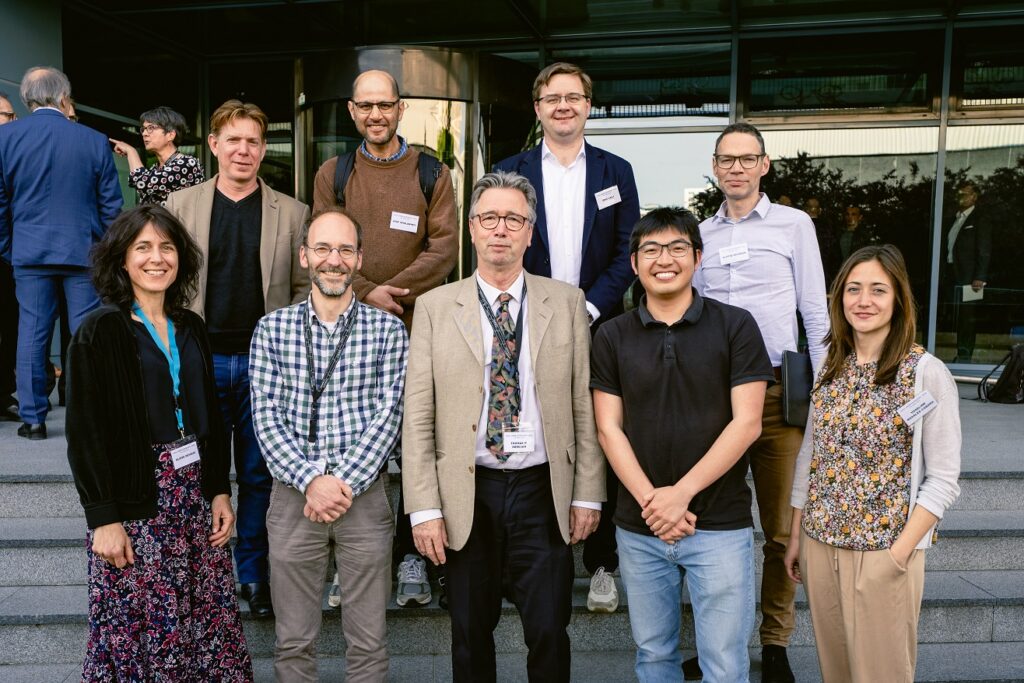 With some alumni of Laboratoire des Nanostructures in front of ISIS (Photo : C. Schneider)
With some alumni of Laboratoire des Nanostructures in front of ISIS (Photo : C. Schneider)
Open Postdoctoral Position
We have a post-doc position available from now and are looking for a person with a background in physical organic chemistry and molecular spectroscopy to study chemical reactivity and other molecular processes under vibrational light-matter strong coupling (see Nagarajan et al, J. Am. Chem. Soc. 2021, 143, 16877−16889). Interested persons should send a CV with two references and letter of motivation to ebbesen@unistra.fr.
Shahana’s seminar
Welcome to Lucas !
Welcome back to Anjali !
We have the pleasure to have Anjali Jayachandran back in the team. Indeed Anjali was already part of the lab for a 6 months master training in 2018. Then she returned to India where she was involved in a non-profit organization. She is now among us for a short contract of laboratory technician. Welcome back to her !

